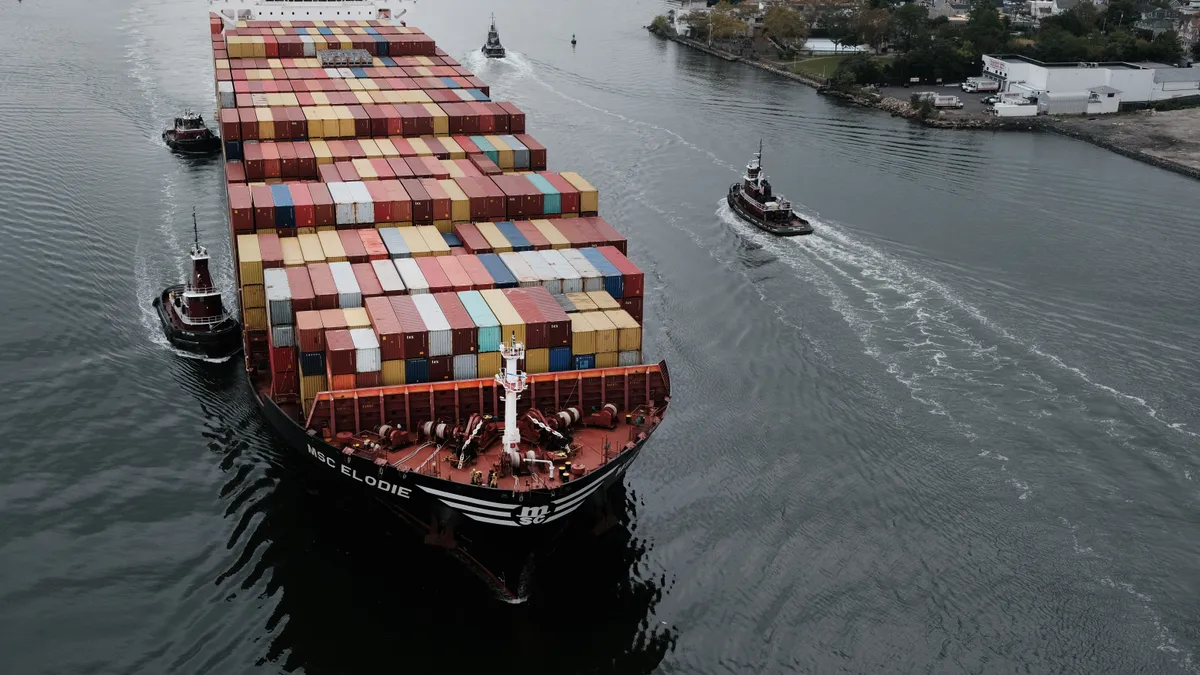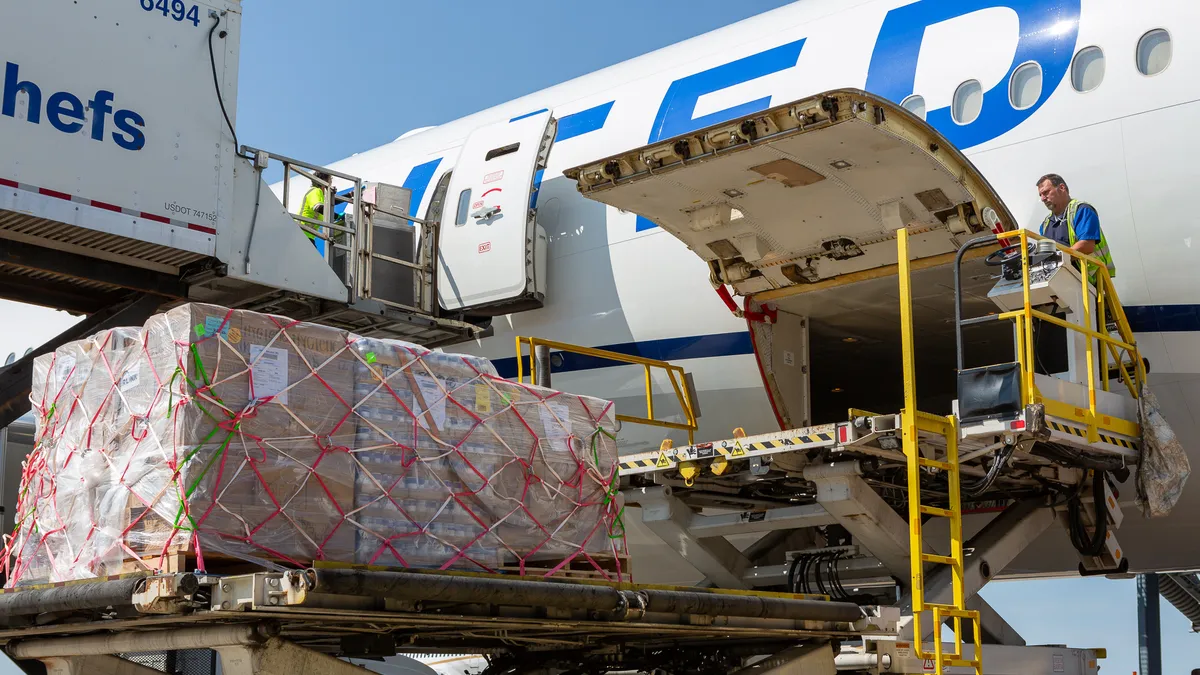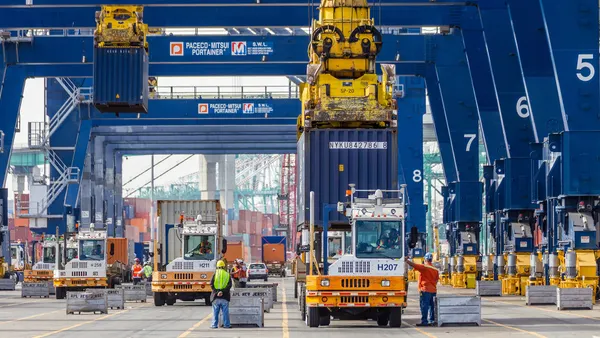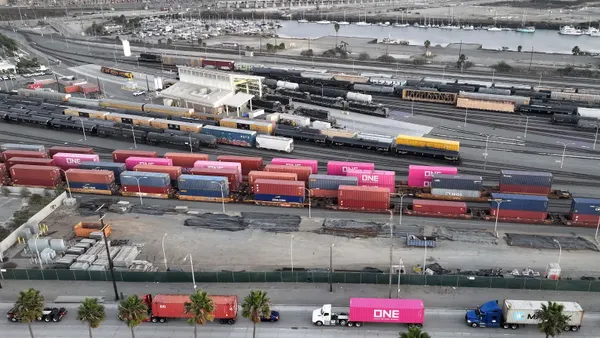The peak holiday season will not be the same as previous years, according to various experts.
Retailers this year are working to clear out inventory piles as demand softens in Q4. Ocean carriers are blanking more sailings. Congestion at ports has shifted away from the West Coast to other areas of the United States. Meanwhile, shippers are keeping an eye on labor negotiations as they craft their logistics strategies.
To get a better pulse on the logistics environment, we asked four experts: What's in store for ocean shippers and carriers this holiday season, particularly as congestion and inventory trends shift?
Some answers have been edited for length and clarity.

Ali Ashraf
Director of ocean product at C.H. Robinson
Ocean shipping now is vastly different from last holiday season when many companies were hoping Santa would bring them a shipping container for Christmas. While rates across trade lanes are trending downward and capacity is healthy, global schedule reliability is still far from normal, and shippers should be mindful of their expectations of on-schedule deliveries heading into 2023. Before the pandemic, global schedule reliability was about 80%. After hitting a low of 30.9% in January, it has been inching up this year but only to 46% so far.
We haven’t seen the traditional ocean peak season this year as retailers flush with inventory have been delaying and at times even canceling orders. During the pandemic, many shippers shifted from ocean to air freight to move goods with urgency as retailers were faced with empty shelves and manufacturers experienced part shortages. But now, some air shipments are returning to ocean as shippers look to reduce costs.
Some shippers may still see delays this holiday season on the West Coast for cargo moving via rail from Los Angeles and Long Beach is still congested due to chassis, rail car and rail labor shortages across inland rail locations such as Dallas, Chicago, Memphis, Kansas City, & Saint Louis. At times it is possible to mitigate some of this disruption, where shippers can identify in advance which rail lines a steamship line has agreements with. For example, knowing the ocean line-and-rail combination for freight scheduled to deliver in north Chicago versus in southern Illinois, can give shippers a faster delivery time and lower cost to their destinations.

Joshua Bowen
Senior vice president of ocean freight for North America at CEVA Logistics
The ocean market during this holiday season is definitely going to be softer than in years past. While current import statistics are still showing growth, the majority of the volume can be attributed to the clean-up of congestion on the West Coast, which has improved dramatically over the past 60 days. This factor is accompanied by a reduction in the overall exports from the production capital of the world. In response, carriers are taking aggressive approaches in blanking specific sailings and canceling specific rotations in order to deal with the reduction in demand.

Carmit Glik
CEO and founding member of Ship4wd
This year, we are not seeing the ‘normal’ pre-holiday season peak that we have seen in previous years. It is indeed reflective of high inventory levels and the decline in consumer demand. Hence, we are witnessing a decline in ocean rates for all trades especially in the West Coast of the U.S. where port congestion has eased. This is a clear indication that we are returning to a pre-COVID-19 environment that will benefit importers, exporters and the end consumer.

Spencer Shute
Principal consultant at Proxima
Peak ocean shipping is mostly behind us as we’ve seen retailers stocking warehouses for months in anticipation of further supply chain bottlenecks. Ongoing supply chain discussions are now centered around strike threats and tightening capacity.
Historically, West Coast ports have been a key indicator of ocean freight. However, that only tells part of the story. Due to the threat of strikes from ongoing labor negotiations, shippers have diverted volumes to the east and gulf coast ports to keep freight moving. While West Coast volumes decreased in the first 9 months of this year, compared to last year, East and Gulf Coast ports have experienced continued increases.
Companies are looking at replenishment models versus forward stocking models as inventories pile up, demand diminishes, and ocean rates plummet from pandemic highs.














